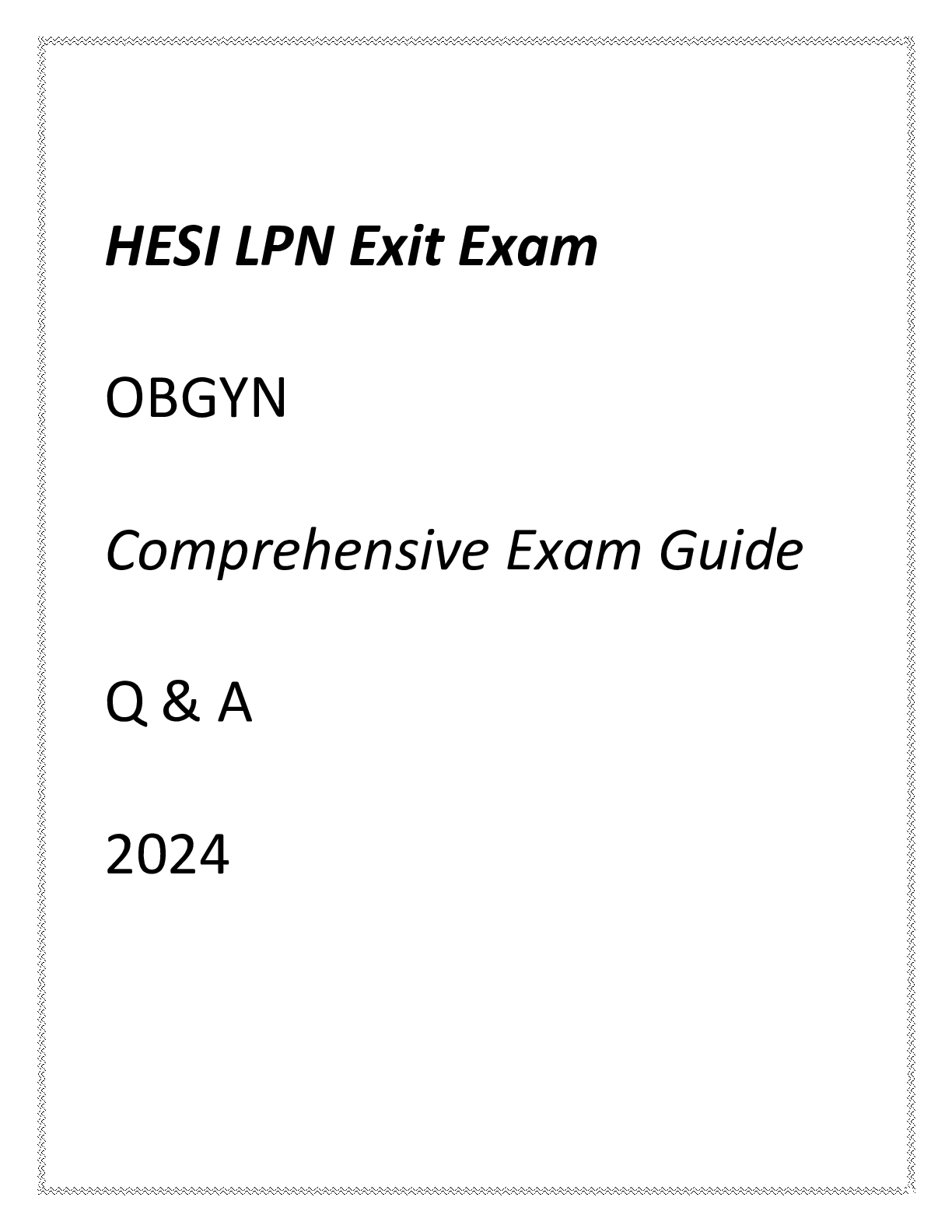
HESI LPN Exit Exam (NCLEX Prep) OBGYN Comprehensive Exam Guide 70+ Qns & Ans 2024
*NURSING > STUDY GUIDE > NR 599 / NR599 Nursing Informatics for Advanced Practice Midterm Exam Review | New!!! Complete (Week (All)
NR 599 / NR599 Nursing Informatics for Advanced Practice Midterm Exam Review | New!!! Complete (Week 1- 4) | Chamberlain College WEEK ONE READING/KEY POINTS McGonigle, D. & Mastrian, K. (2018). Ch ... apter 1 1. Nursing informatics: - specialty that integrates nursing science, computer science, cognitive science, and information science 2. For information to be valuable & quality it must be: - Accessible & Utility: right user obtain right information at the right time in the right format - Accurate: - Timely: available when needed for the right purpose at the right time - Complete: contains all necessary essential data - Cost-effective - Flexible: information may be used for a variety or purposes - Reliable: authoritative or credible source - Relevant: subjective descriptor that has relevant information that is useful - Simple - Verifiable - Transparency: allows user to apply their intellect to accomplish tasks while tools housing the information disappears into the background - Secure - Reproducibility: ability to produce the same information again Chapter 2 3. Data: - raw facts 4. Information: - processed data that has meaning 5. Data integrity: - whole, complete, correct, and consistent data 6. Dirty data: - database that contains errors such as duplicate, incomplete, or outdated records 7. Information science: - study of information science-- concerned with input, processing, output, and feedback of data and information through technology integration with a focus on comprehending the perspective of the stakeholders involved and then applying IT as needed. - Systemically based-- deals with big picture, opposed to individual pieces of technology - Integrates communication science, computer science, cognitive science, library science, and social science - Links people and technology - Machines (inorganic ISs) Humans (organic ISs) - Focuses on why and how technology can be put to best use to serve the information flow within an organization 8. Information systems: - handle the needs of the entire organization (communication, tracking, and research) 9. Input: - collecting and acquiring raw data o Keyboards, touch screen, mice, light pens, automatic scanners 10. Processing: - retrieval, analysis, synthesis of data-- transforms data into useful information and outputs o Storing for future use, making calculations, comparing data 11. Output: - dissemination-- produces helpful information o Reports, documents, summaries, alerts, outcomes Chapter 3 12. Motherboard: - central nervous system of the computer-- facilitates communication among all components of the computer 13. Hard disk: - permanent data storage area that holds gigabytes of data, information, documents even when the computer is turned off. - Backing up important files is important because disk drives are not infallible 14. Random-access memory: [Show More]
Last updated: 3 years ago
Preview 1 out of 19 pages

Buy this document to get the full access instantly
Instant Download Access after purchase
Buy NowInstant download
We Accept:

Can't find what you want? Try our AI powered Search
Connected school, study & course
About the document
Uploaded On
Nov 18, 2020
Number of pages
19
Written in
All
This document has been written for:
Uploaded
Nov 18, 2020
Downloads
0
Views
190
Scholarfriends.com Online Platform by Browsegrades Inc. 651N South Broad St, Middletown DE. United States.
We're available through e-mail, Twitter, Facebook, and live chat.
FAQ
Questions? Leave a message!
Copyright © Scholarfriends · High quality services·